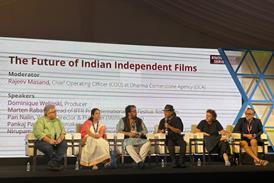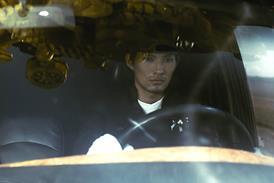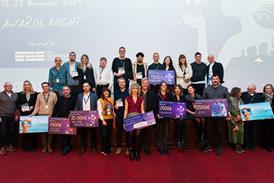A groundbreaking report points to the social impact of a documentary film, spurred by a willingness to work with 15 different partners.
In a week of Oscar glamour, it’s nice to be reminded that film can have an impact on people’s daily lives in a way not measured by trophies or weekend box-office.
There is a fascinating new report about the social impact of Rupert Murray’s documentary The End Of The Line, about the affects of over-fishing on the world’s oceans.
The Britdoc Foundation (which also backed the film) has done the first report of its kind, tracking the impact of the film among UK adults.
We’ve all heard anecdotes of people who haven’t stepped into a McDonald’s since they saw Super Size Me, but this report gives us hard evidence of the way a film can impact a social issue.
The film had a UK theatrical release (via Dogwoof) in 2009 followed by airings on More4 and Channel 4, a DVD release and also a DVD giveaway in the Sunday Times newspaper.
Before watching the film, 26% of people said that they didn’t think overfishing was a big problem; after viewing, 85% said it was quite a big problem or one of the greatest problems facing us.
The press value of coverage of over-fishing had a PR value of £4m. For every person who had watched the film, another 510 people had heard about it. There was widespread press attention about the issue, and moments of luck like Stephen Fry tweeted how much he liked the documentary.
This report offers two reasons for celebration: 1) a film inspiring real social awareness in our overcrowded media-saturated world; and 2) the strength-in-numbers philosophy that can help a film grow via partners.
I’m struck by the number of parties that were involved in getting the word out – it wasn’t just the overworked filmmakers and distributors flogging another independent documentary; they also had the might of at least 15 other partners – from Greenpeace to Waitrose to Surfers Against Sewage – on board.
Foundations and NGOs getting involved in film is a trend that’s been growing in recent years and makes a lot of sense both financially and in terms of getting the word out.
Filmmakers are understandably wary of partnering with brands or groups with their own separate agenda, but working with an outside group doesn’t always mean losing control of your vision, but helping your vision reach more people and have more impact. Without a household name like Waitrose on board, the media attention would have certainly been smaller for The End of The Line.
It can also work for less ‘worthy’ causes – like when Eurostar backed Shane Meadows (who had complete creative control) on his film Somerstown in 2008.
For businesses or NGOs or charities, film can be one of the most effective ways to spread your message – in the example of The End Of The Line, the audience of the film committed to buying sustainable fish nearly doubled from 43% to 84% after one screening of the film.
Waitrose, a theatrical release partner, had a 15% increase in sustainable fish sales in the four weeks following the film’s release (compared to the previous year) and attributed at least some of this to the film.
It’s not a perfect world – NGOs or other businesses don’t always understand the filmmaking timetables (or their fluidity) and in this case, there were some gaps in expectations and demands on both sides, as concluded in The End of the Line report.
But overall, this report points to the ways The End of the Line was a success, and a testament that working together, even with unexpected partners, can get a great result.
Maybe working with non-film partners is one tiny step toward creating sustainability for independent filmmakers, not just fish…

























2 Readers' comments